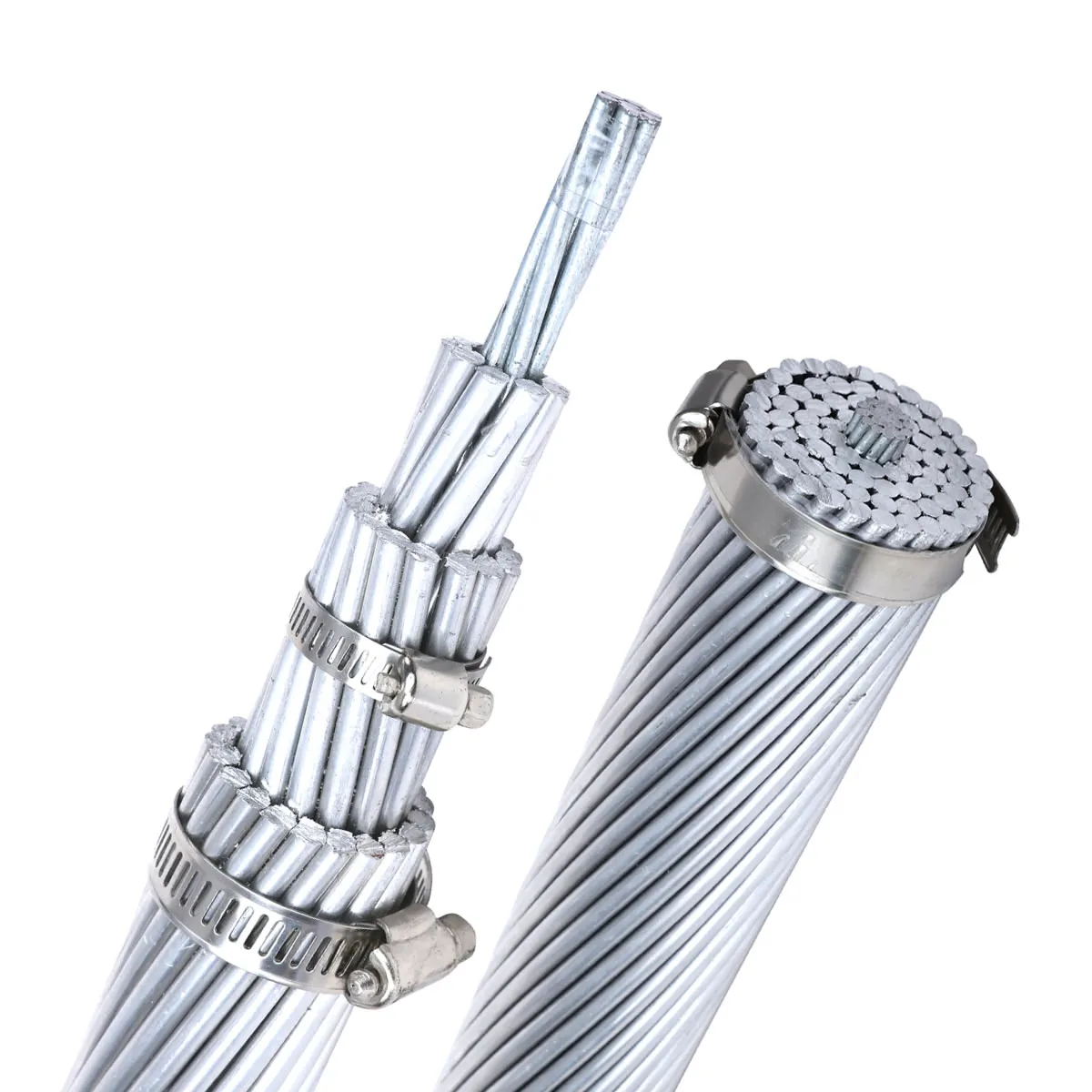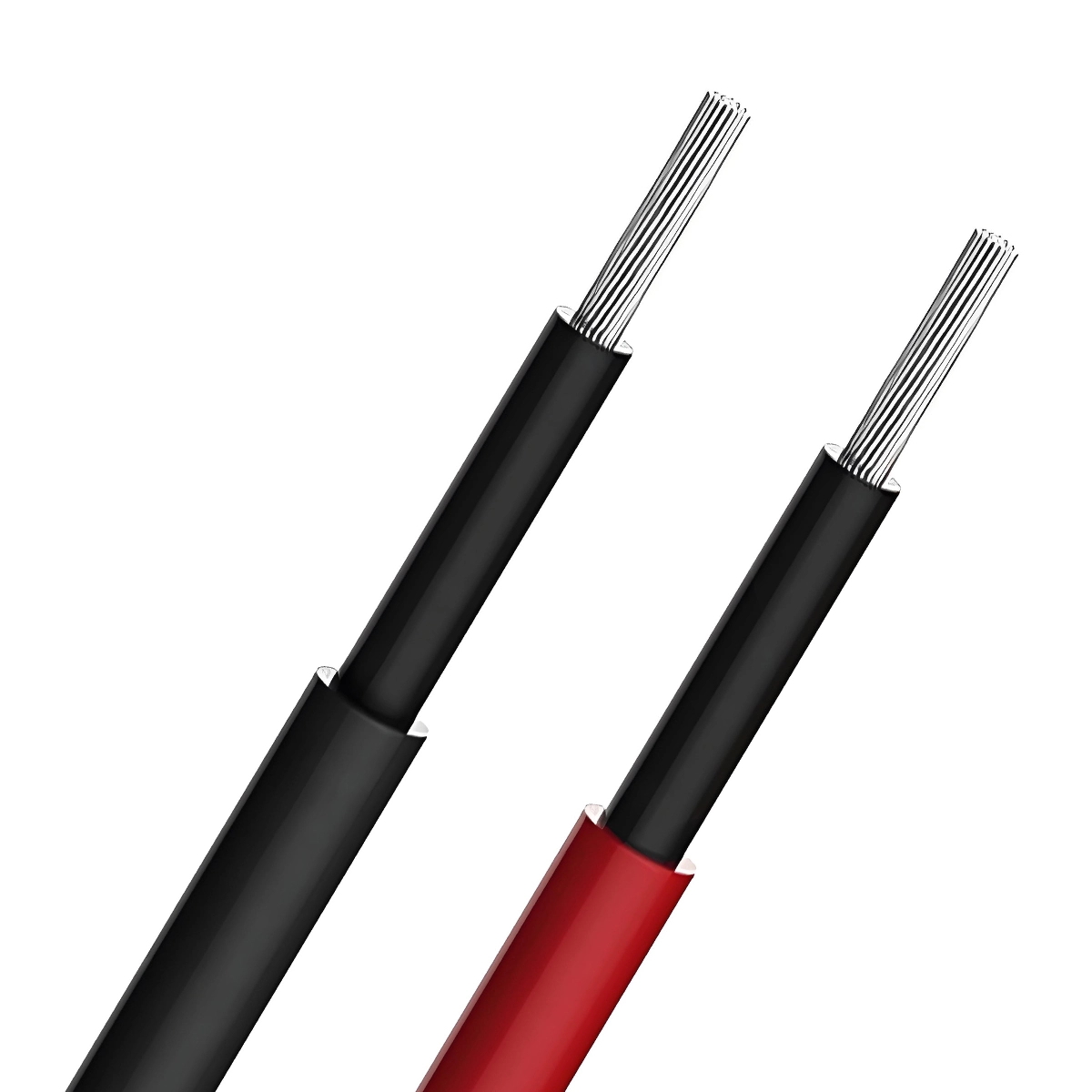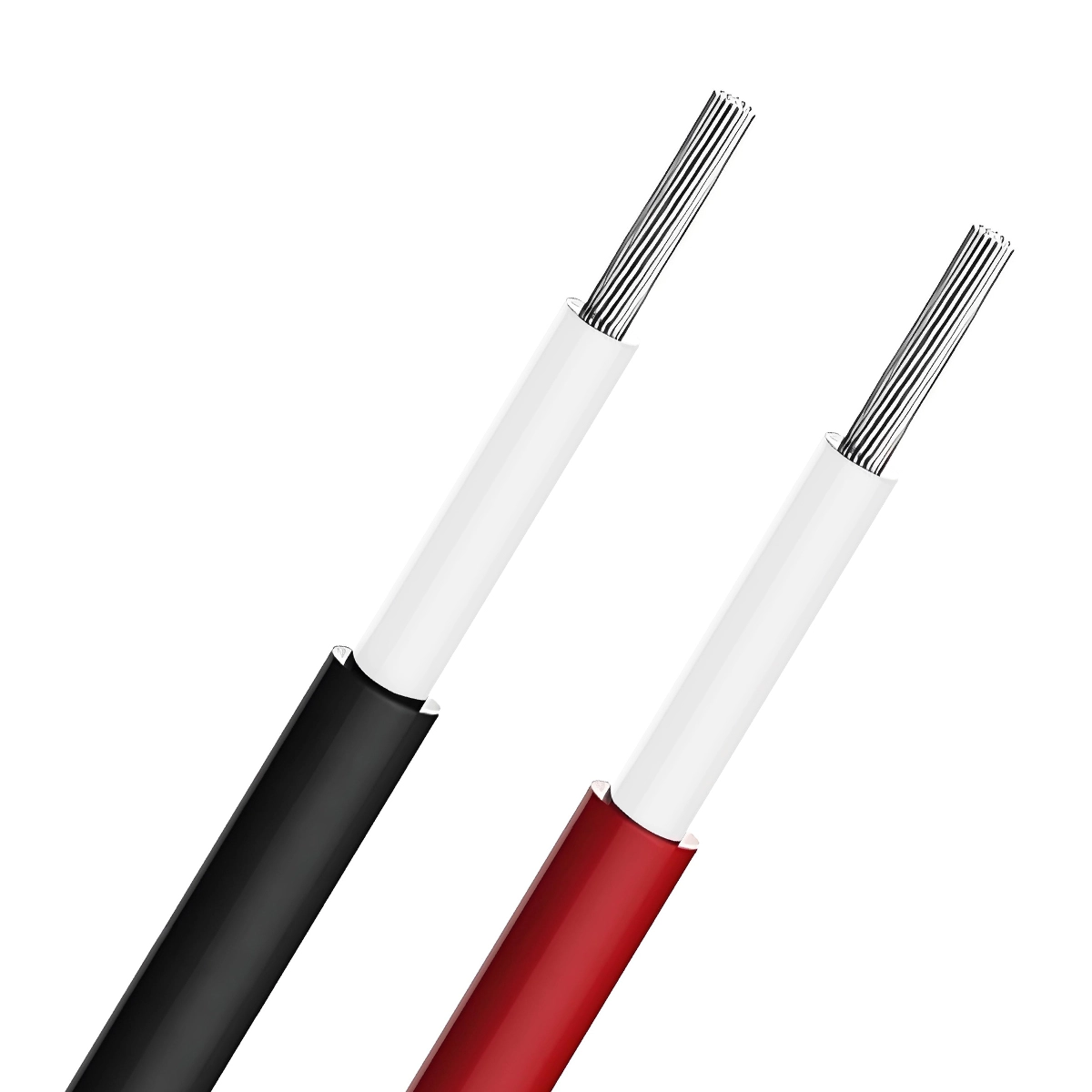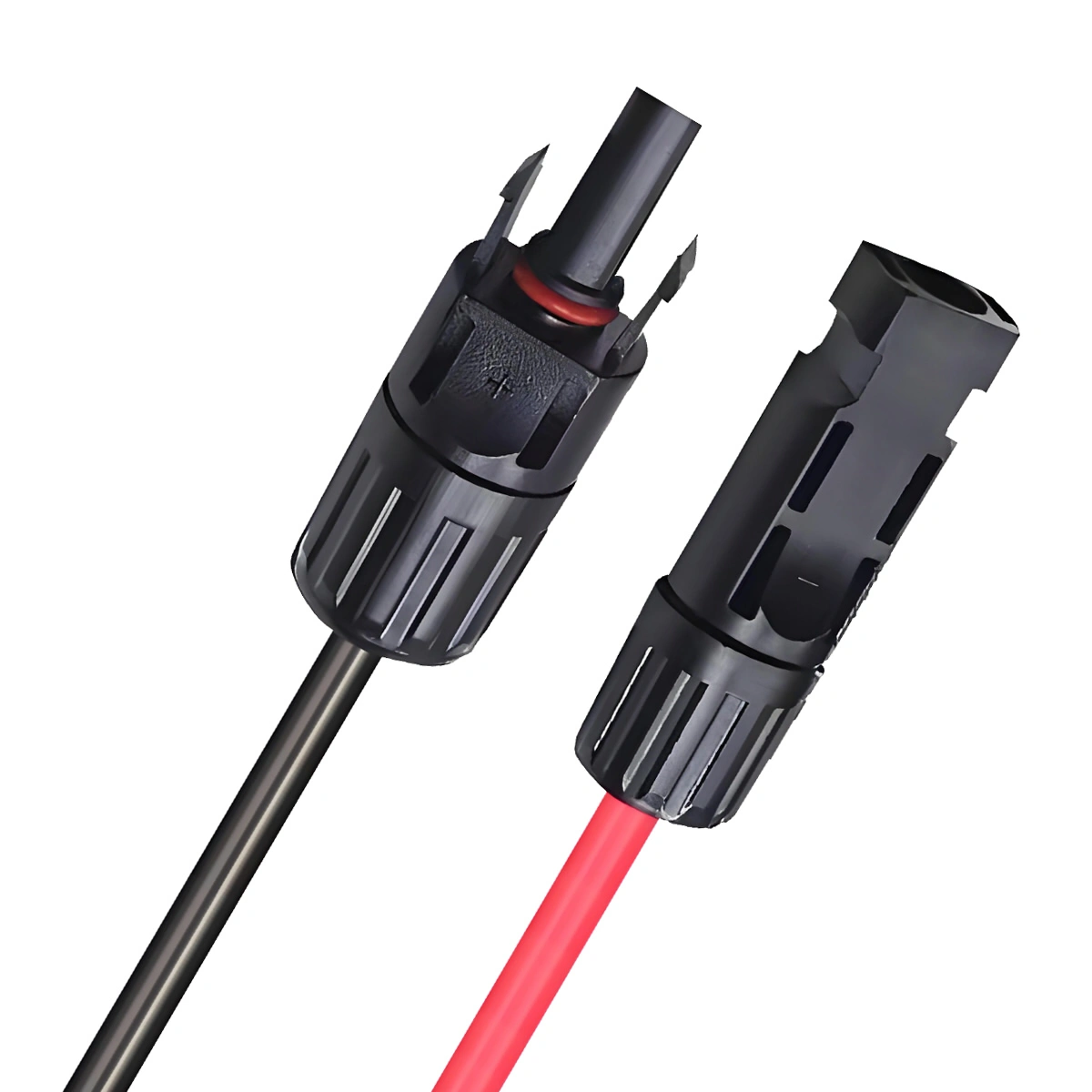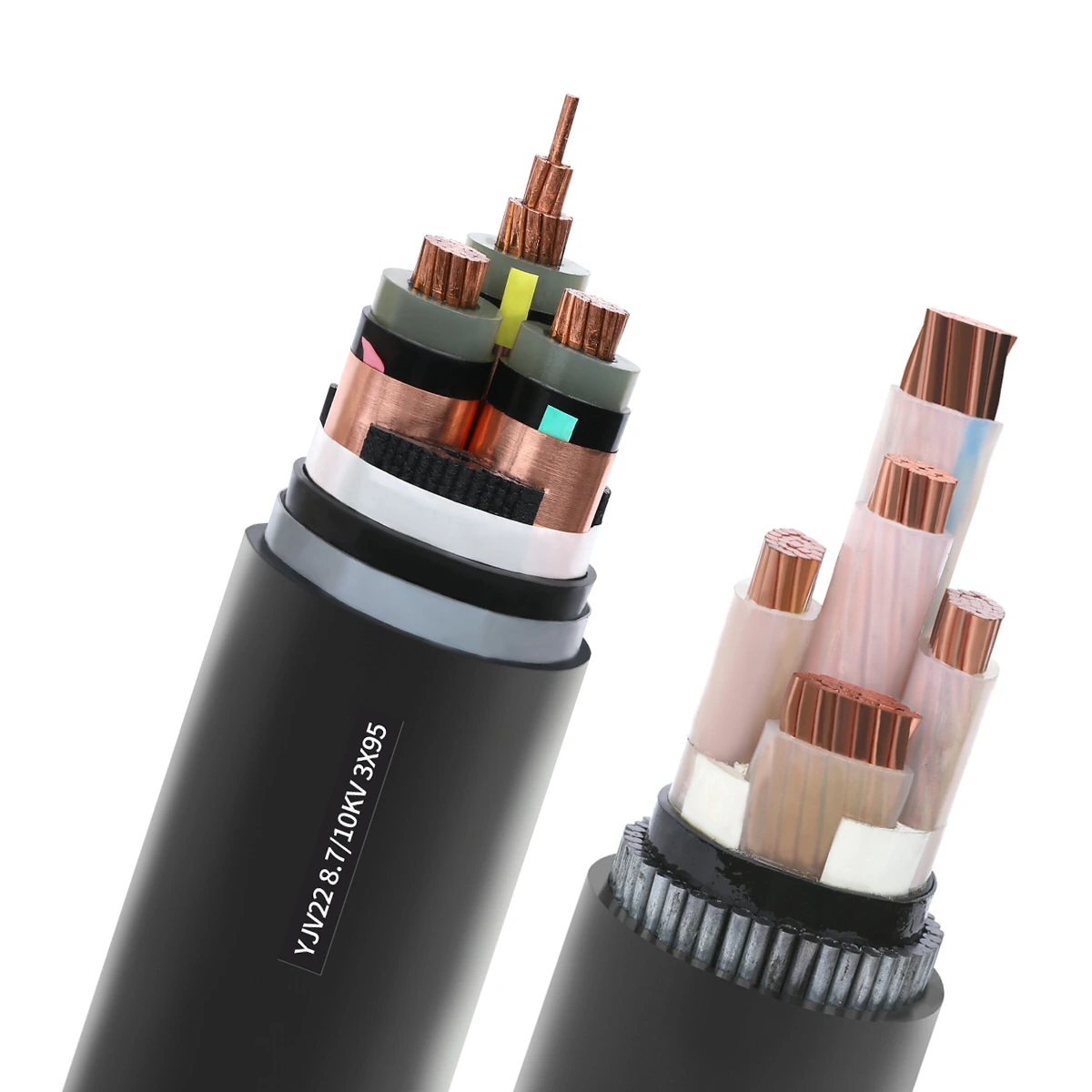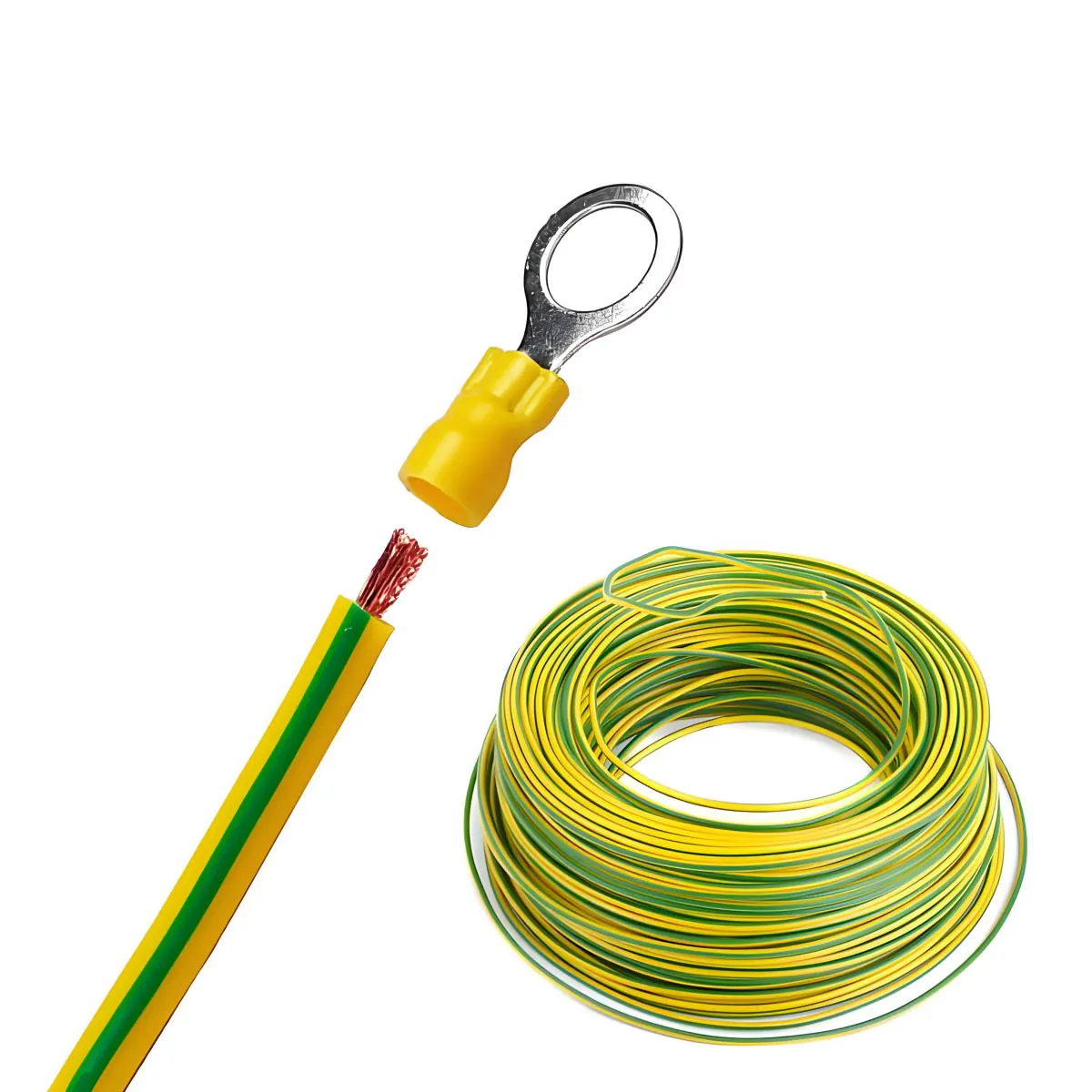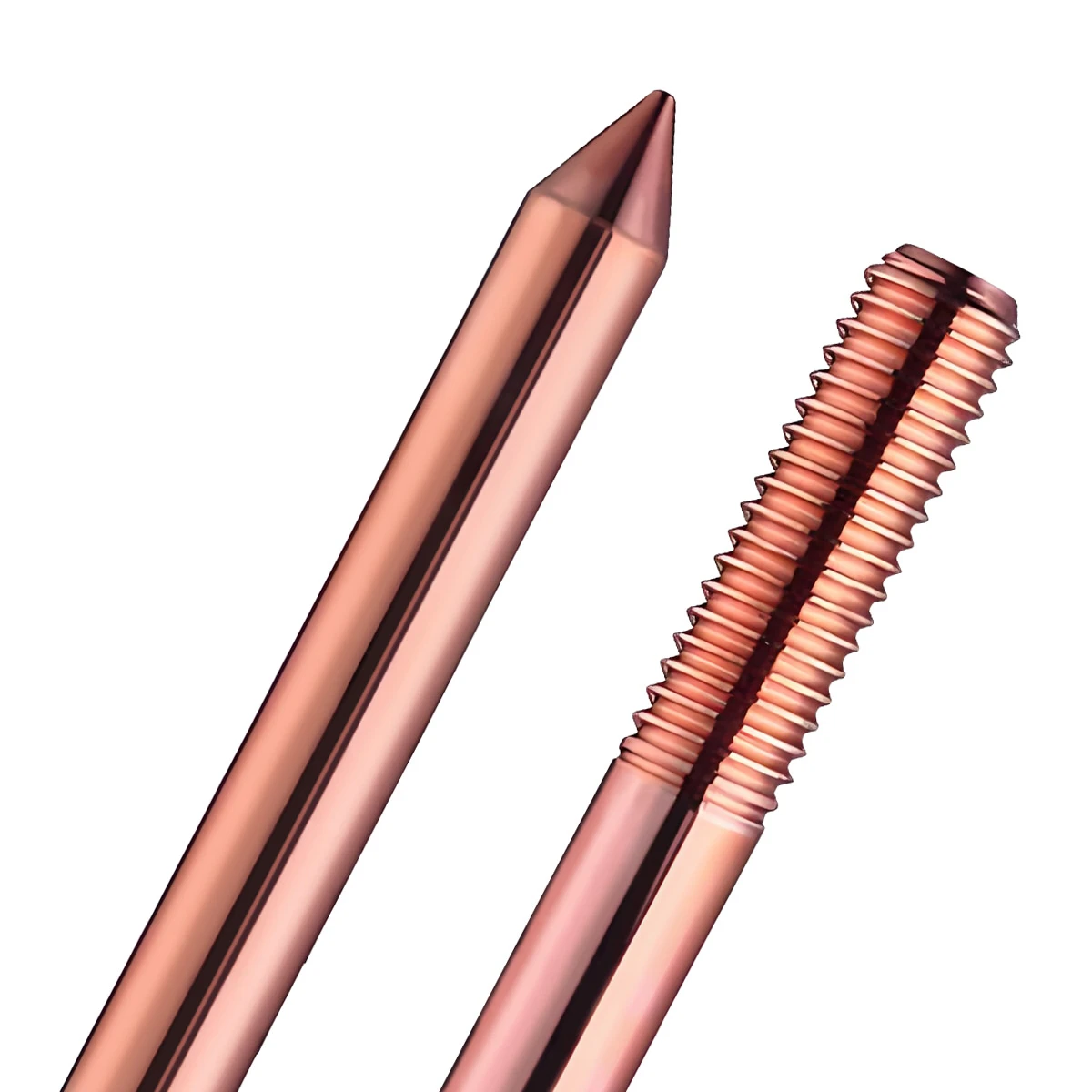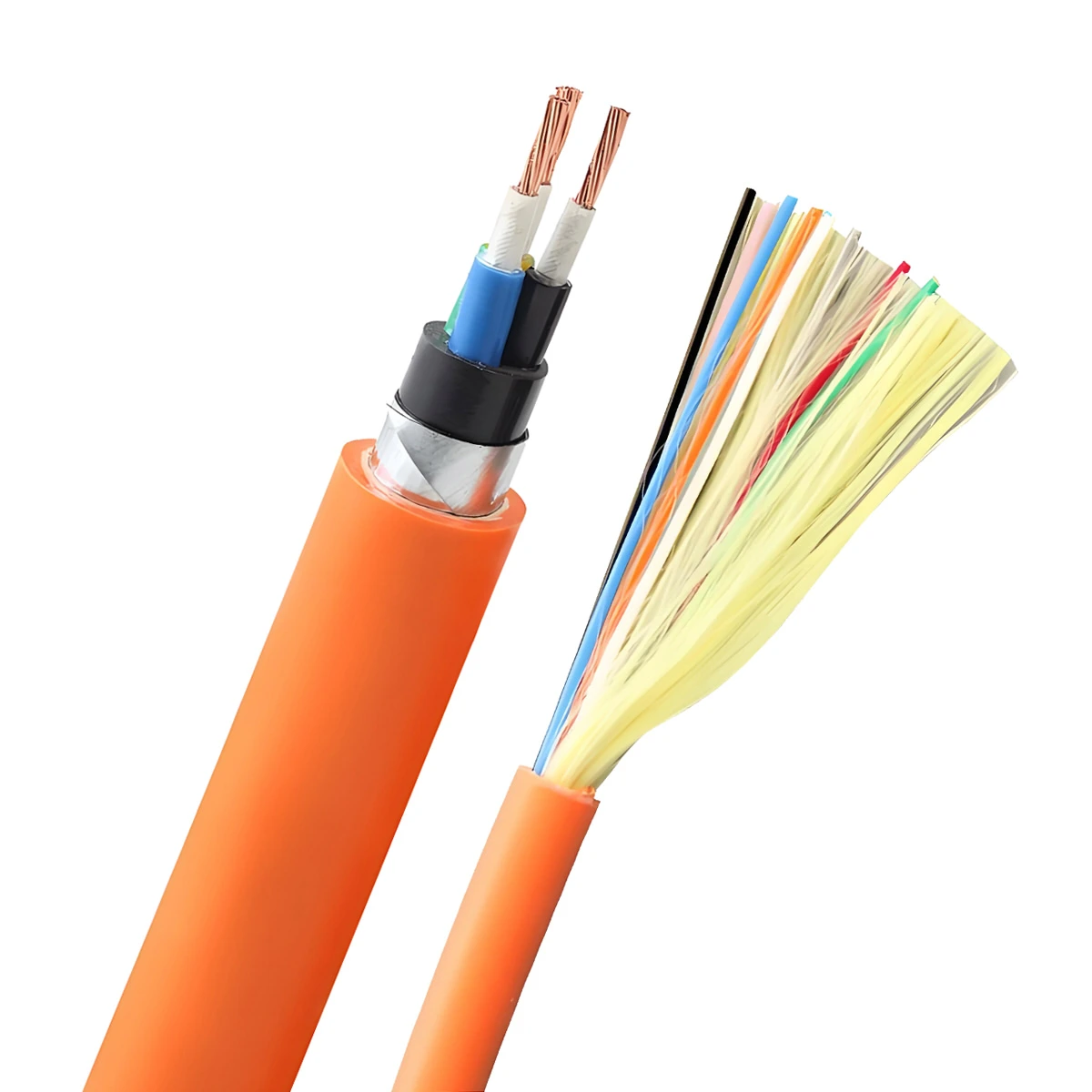สายเคเบิลเหนือศีรษะ
Overhead cable can integrate the electricity generated by solar power systems into the grid. ZMS สามารถจัดเตรียมสายเคเบิลเหนือศีรษะที่จำเป็น เช่น ACSR, เปิด, เอเอซี, and AAAC for various photovoltaic power generation projects.
In grid-connected solar power systems, the type of overhead cable used depends on specific installation requirements, such as voltage level, current-carrying capacity, mechanical strength, and environmental conditions.
From DC cables used for solar panels to AC cables used for inverter output, and finally to the overhead or underground cables that connect to the grid, ZMS’s professional team will comprehensively consider the scale of the solar project, geographical location, environmental conditions, and grid connection requirements to tailor the most suitable power cabling solution for you.
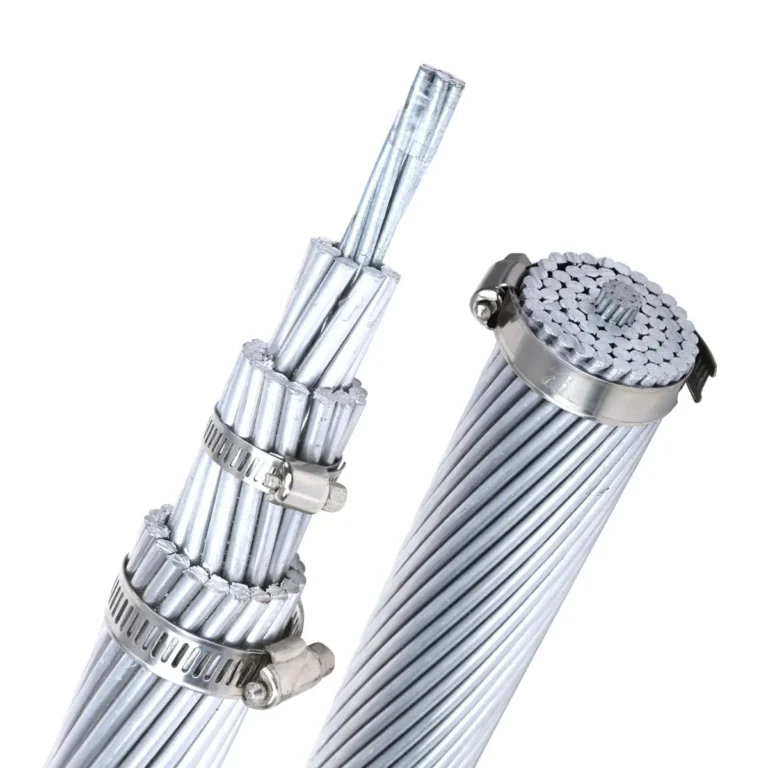

เอเอซี (All Aluminum Conductor)
โครงสร้าง:
AAC is composed of one or more strands of aluminum wire. These conductors are made from electrolytically refined aluminum with a minimum purity of 99.7%. The construction follows the standards of EN 60889 Type AL1 according to BS 215.
Characteristics:
AAC conductors are highly conductive and primarily used in urban areas for low, medium, and high voltage overhead lines where spans are short. They exhibit excellent corrosion resistance, making them ideal for coastal regions.
Standards:
ASTM B 230, ASTM B 231, TS IEC 1089, DIN48201, and BS 215.
AAAC (All Aluminum Alloy Conductor)
โครงสร้าง:
AAAC cables consist of aluminum alloy wires concentrically stranded. They are made from a magnesium-silicon-type aluminum alloy (alloy 6201) with magnesium content between 0.6-0.9% and silicon content between 0.5-0.9%. These conductors are designed to be highly conductive with a minimum of 53% IACS.
Characteristics:
AAAC conductors offer improved strength, weight, and electrical properties compared to AAC and ACSR. They have better vertical tensile properties and enhanced corrosion resistance, making them suitable for medium and high voltage transmission lines. Their lower ice-breaking loads are advantageous in regions with low ice and wind loads. AAAC conductors are customizable based on specific application needs and customer requirements.
Standards:
ASTM B 230, ASTM B 231, TS IEC 1089, DIN48201, and BS 215.
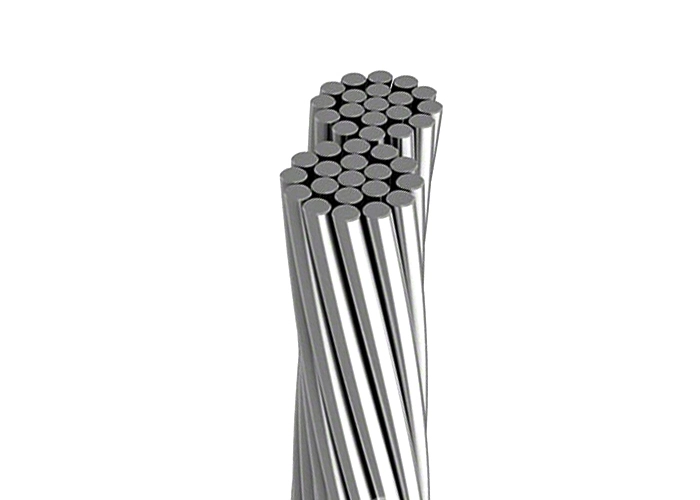
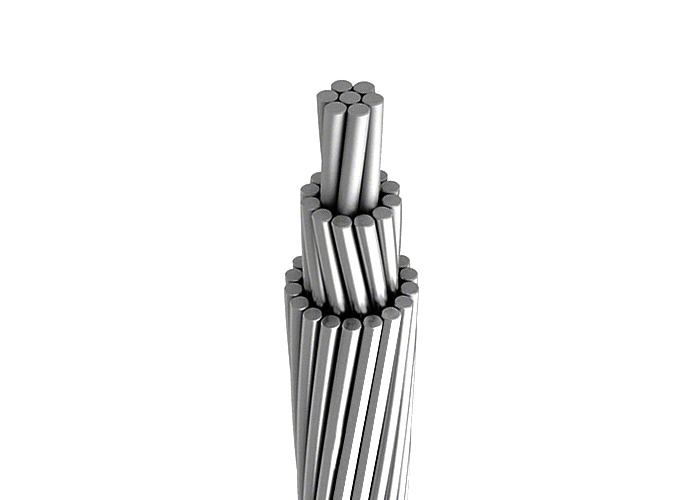
ACSR (Aluminum Conductor Steel Reinforced)
โครงสร้าง:
ACSR conductors consist of several aluminum and galvanized steel conductors stranded in concentric layers. The core is made of galvanized steel, which may consist of 1, 7, หรือ 19 wires, and is surrounded by aluminum strands. The core wire for ACSR is available with class A, B, or C galvanizing.
Characteristics:
ACSR cables are versatile and suitable for transmission lines across all voltage levels, including challenging terrains such as rivers and ravines. By adjusting the proportions of aluminum and steel, specific properties for various applications can be achieved. Increasing the steel content enhances antistatic properties, while more aluminum content increases current carrying capacity.
Standards:
ASTM B 230, ASTM B 231, TS IEC 1089, DIN48201, and BS 215.
ผลิตภัณฑ์เคเบิล ZMS
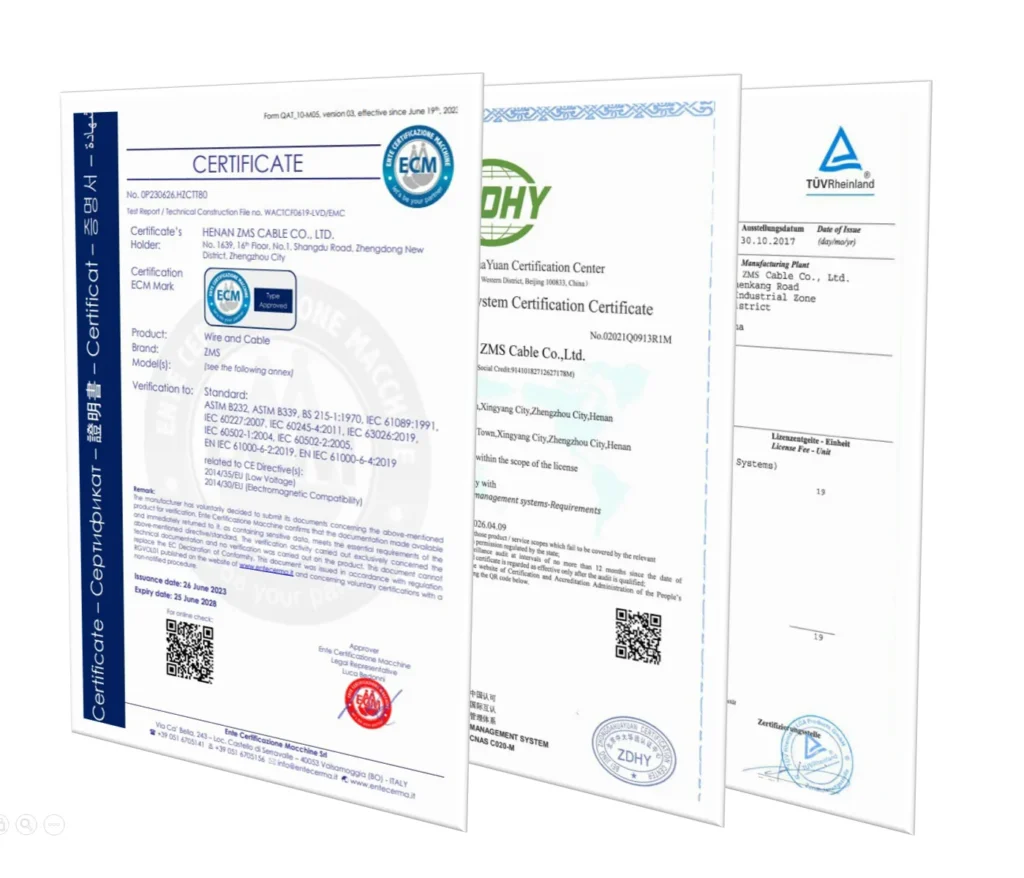
คำถามที่พบบ่อย
สายไฟเหนือศีรษะใดที่จะใช้ในระบบพลังงานแสงอาทิตย์?
ในระบบผลิตไฟฟ้าโซลาร์เซลล์ที่เชื่อมต่อกับกริด, เมื่ออินเวอร์เตอร์แปลงไฟ DC ที่สร้างขึ้นเป็นไฟ AC และรวมเข้ากับโครงข่ายไฟฟ้ากระแสสลับ, การส่งกำลังมักดำเนินการผ่านสายเหนือศีรษะ. โดยทั่วไป, กระบวนการเชื่อมต่อโครงข่ายของระบบผลิตไฟฟ้าโซลาร์เซลล์สามารถเกิดขึ้นได้ในสถานการณ์ต่อไปนี้:
การเชื่อมต่อโดยตรง
สำหรับระบบผลิตไฟฟ้าโซลาร์เซลล์แบบกระจายขนาดเล็ก, เช่นแผงเซลล์แสงอาทิตย์บนหลังคาที่อยู่อาศัย, ไฟ DC สามารถแปลงเป็นไฟ AC ได้โดยตรงผ่านอินเวอร์เตอร์ จากนั้นเชื่อมต่อกับโครงข่ายไฟฟ้าแรงต่ำผ่านสายจำหน่าย. ในกรณีนี้, underground low-voltage cables and overhead insulated cables like ABC cables can be used.
การเชื่อมต่อผ่าน Box Transformers หรือการรวมสถานีย่อย
สถานีไฟฟ้าโซลาร์เซลล์ขนาดกลางหรือเชิงพาณิชย์อาจใช้สถานีไฟฟ้าย่อยแบบกล่อง (หม้อแปลงกล่อง) เพื่อแปลงไฟ DC ที่สร้างขึ้นเป็นไฟ AC เหมาะสำหรับการรวมโครงข่ายผ่านอินเวอร์เตอร์, จากนั้นเพิ่มแรงดันไฟฟ้าผ่านหม้อแปลงกล่องให้ตรงกับระดับแรงดันไฟฟ้าของโครงข่ายเหนือศีรษะ, ก่อนที่จะเชื่อมต่อกับสายเหนือศีรษะ.
โรงไฟฟ้าพลังงานแสงอาทิตย์แบบติดตั้งภาคพื้นดินขนาดใหญ่มักต้องใช้หม้อแปลงไฟฟ้าเพื่อเพิ่มแรงดันไฟฟ้าให้สูงขึ้นเพื่อการส่งสัญญาณที่มีประสิทธิภาพ. ในกรณีนี้, กำลังไฟฟ้าเชื่อมต่อโดยตรงกับสถานีย่อย, ซึ่งจะกระจายไปยังโครงข่ายไฟฟ้าแรงสูงหรือไฟฟ้าแรงสูงพิเศษ.
ในสองสถานการณ์นี้, หากระยะทางจากสถานีไฟฟ้าถึงจุดเชื่อมต่อโครงข่ายค่อนข้างสั้นและมีโหลดไม่มาก, AAC cable could be an economical choice. สำหรับระยะทางปานกลางหรือที่ต้องการสมรรถภาพทางกายที่ดีขึ้น, AAAC cable may be a better option. สำหรับการส่งสัญญาณทางไกลหรือเมื่อต้องการความแข็งแรงของสายเคเบิลพิเศษ, โดยเฉพาะอย่างยิ่งเมื่อเส้นเหนือศีรษะจำเป็นต้องข้ามภูมิประเทศที่ซับซ้อนหรือทนต่อสภาพอากาศที่รุนแรง, ACSR conductor will be the most suitable choice.
What Are the Differences between AAC, AAAC, and ACSR Cables?
เอเอซี: All-Aluminum Conductor (เอเอซี) cables are relatively low-cost, lightweight, and have good conductivity, making them suitable for short-distance transmission and light load conditions. อย่างไรก็ตาม, their strength is relatively low, with limited tensile capability, which might not be suitable for long distances or situations requiring high mechanical strength.
AAAC: Compared to AAC, All-Aluminum Alloy Conductor (AAAC) cables have higher mechanical strength, better tensile strength, and corrosion resistance while maintaining good conductivity. This makes AAAC more suitable for medium-length transmission lines and environments with certain mechanical strength requirements, although the cost may be slightly higher than AAC.
ACSR: Aluminium Steel Reinforced Conductor (ACSR) cables combine the excellent conductivity of aluminum with the high strength of steel. They are particularly suitable for long-distance, heavy load, or transmission lines with strict mechanical strength requirements. ACSR cables can effectively withstand storms, snow loads, and line tension but are relatively more expensive.
In solar power generation systems, the choice between AAC, AAAC, or ACSR cables mainly depends on the system’s design, transmission distance, load requirements, and cost-benefit analysis. For short-distance and light load power transmission, AAC can be selected. For medium distances or where better physical performance is needed, AAAC is suitable. For long-distance transmission or complex environmental conditions, ACSR is usually the preferred choice.
What Factors Should Be Considered When Selecting Overhead Cables for PV Power Systems?
When selecting overhead lines for photovoltaic power generation systems, several key factors must be considered to ensure the system’s safety, ประสิทธิภาพ, and long-term reliability:
Environmental Conditions: Evaluate the climate conditions of the installation site, including wind speed, rainfall, temperature range, ice load, and salt spray corrosion. Choose overhead cable types and specifications that can withstand these environmental impacts.
Voltage Level and Current Carrying Capacity: Select cables with the appropriate voltage level and sufficient current carrying capacity based on the output power of the photovoltaic power generation system and grid connection requirements to ensure safe and lossless power transmission.
ประเภทตัวนำ: Consider using AAC, AAAC, or ACSR conductors based on transmission distance, load requirements, and cost-benefit analysis. For low-voltage transmission, use insulated cables such as PVC or XLPE insulated cables.
Route Planning: Follow overhead line route selection principles, such as shortening the path as much as possible, reducing corners, avoiding potential obstacles and hazardous areas, ensuring line stability, and ease of maintenance.
Mechanical Strength and Durability: Choose cables that can withstand tension, wind pressure, and other mechanical stresses. For long-distance transmission or harsh environments, high mechanical strength ACSR may be the better choice.
Installation and Maintenance: Consider the ease of installation, maintenance costs, and potential future expansion needs. Choose cable types that are easy to install and maintain.
Safety: Ensure that overhead cables and accessories comply with local safety standards and regulations, including lightning protection and grounding requirements, to prevent electrical fires and electric shock risks.
Cost-Effectiveness: Conduct a comprehensive evaluation of the costs and benefits of different overhead power cable solutions, including initial investment, operational maintenance costs, and expected lifespan, to make the most economical and reasonable decision.
Compatibility and Compliance: Ensure that the selected overhead cable matches the output power of the photovoltaic system and meets national or regional electrical safety standards and grid connection requirements.
Future Expandability: Consider the potential expansion of the solar system. Choose cables with some redundancy to facilitate convenient upgrades when increasing generation capacity or improving the system in the future.
The final cable selection should be based on the specific project’s actual situation, including environmental factors, budget constraints, safety standards, and grid requirements. ZMS can provide a comprehensive cable solution for your solar power generation project, helping to simplify the project implementation process, shorten construction periods, and effectively control costs.
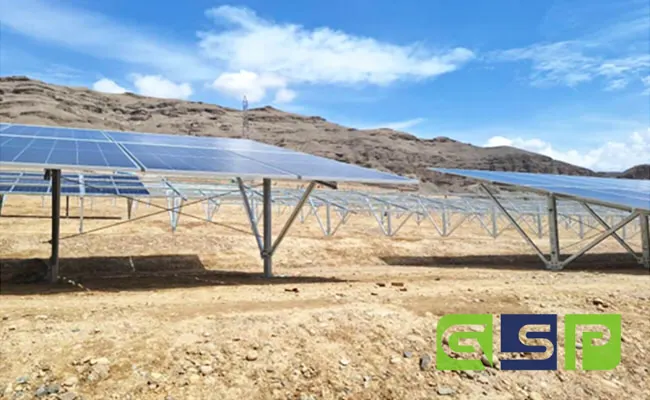
จุดเด่นของโครงการ
ZMS ผนึกกำลังกับ พลังรัฐสีเขียว (จีเอสพี), ผู้บุกเบิกโครงสร้างพื้นฐานด้านพลังงานทดแทน, เพื่อจัดให้มีอนุสาวรีย์ 10 โครงการเซลล์แสงอาทิตย์ MWP ในกรุงคาบูล, อัฟกานิสถาน.
ZMS วิเคราะห์โครงการ PV อย่างครอบคลุมและจัดเตรียมไว้ให้ 1สายโซล่าเซลล์ X10 และ 1X6 H1Z2Z2-K, 3สายเคเบิล X300 LV, 3สาย X300 MV, เช่นเดียวกับ ACSR 185/30 สายเคเบิลเหนือศีรษะ. สิ่งที่เติมเต็มเหล่านี้คืออุปกรณ์เสริมที่สำคัญ เช่น ขั้วต่อ PV และกล่องเครื่องมือที่ได้รับการดูแลอย่างพิถีพิถัน.
ความมุ่งมั่นของ ZMS ในด้านคุณภาพและความน่าเชื่อถือช่วยให้การติดตั้งและประสิทธิภาพการดำเนินงานราบรื่น, มีส่วนสนับสนุนโครงสร้างพื้นฐานด้านพลังงานที่ยั่งยืนของภูมิภาค.
บริการ ZMS
การผลิตที่กำหนดเอง
We understand that every customer's needs are unique. ดังนั้น, เราเสนอบริการปรับแต่งสายเคเบิลพลังงานแสงอาทิตย์ส่วนบุคคล, ปรับแต่งทุกรายละเอียดตั้งแต่ข้อมูลจำเพาะของสายเคเบิลไปจนถึงอินเทอร์เฟซการเชื่อมต่อตามความต้องการเฉพาะของโครงการของคุณ, รับประกันความเข้ากันได้และประสิทธิภาพสูงสุด.
โลจิสติกส์ตอบสนองอย่างรวดเร็วทั่วโลก
ด้วยการสนับสนุนจากเครือข่ายลอจิสติกส์ทั่วโลกของเรา, ZMS ช่วยให้มั่นใจได้ว่าคำสั่งซื้อเคเบิลไฟฟ้าโซลาร์เซลล์ของคุณจะไปถึงทุกมุมโลกอย่างปลอดภัยและรวดเร็ว. ทีมโลจิสติกส์มืออาชีพของเราจะตรวจสอบทุกขั้นตอนของการขนส่งเพื่อให้แน่ใจว่ามีการจัดส่งสินค้าของคุณตรงเวลา.
การสนับสนุนทางเทคนิค
ZMS's technical support team is always on standby. ไม่ว่าคุณจะเผชิญกับความท้าทายทางเทคนิคใดก็ตาม, เราสามารถให้การตอบสนองที่รวดเร็วและโซลูชั่นระดับมืออาชีพ, รับประกันประสบการณ์ผู้ใช้ที่ไร้กังวล.
การผลิตสีเขียว
สายไฟและอุปกรณ์เสริมพลังงานแสงอาทิตย์ของเราปฏิบัติตามมาตรฐานด้านสิ่งแวดล้อมอย่างเคร่งครัดในระหว่างกระบวนการผลิต, ลดผลกระทบต่อสิ่งแวดล้อมให้เหลือน้อยที่สุด. โดยเลือก ZMS, คุณไม่เพียงแต่ลงทุนในสายเคเบิลไฟฟ้าโซลาร์เซลล์คุณภาพสูงเท่านั้น แต่ยังมีส่วนช่วยในการพัฒนาที่ยั่งยืนของโลกอีกด้วย.

